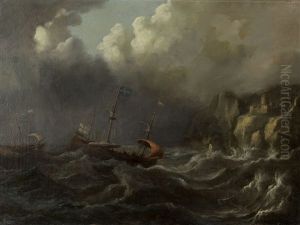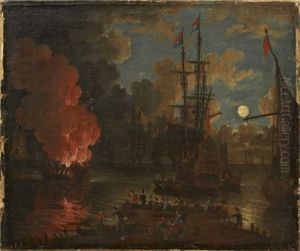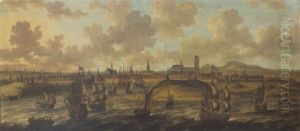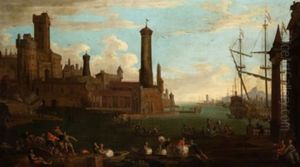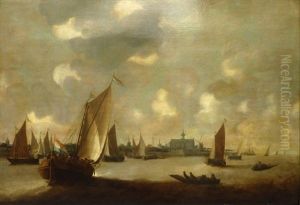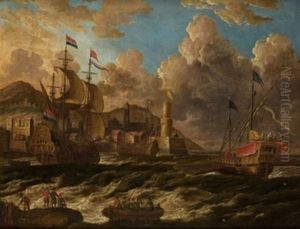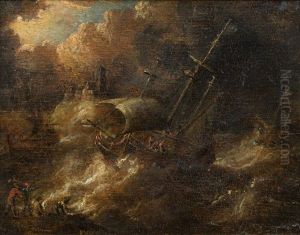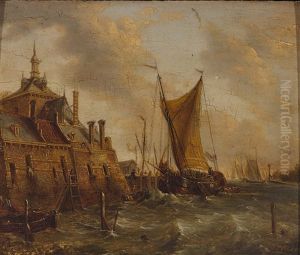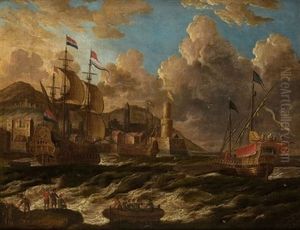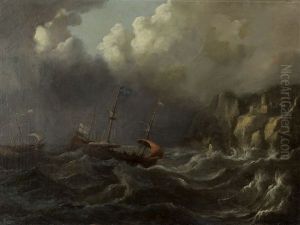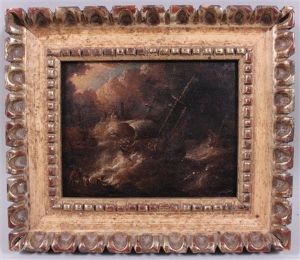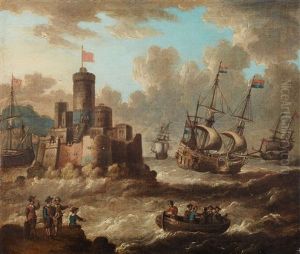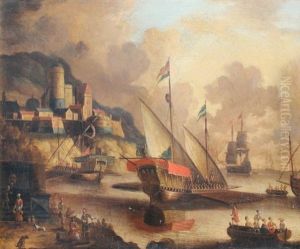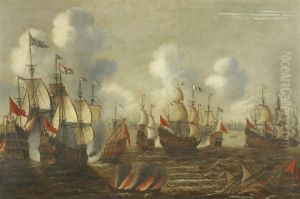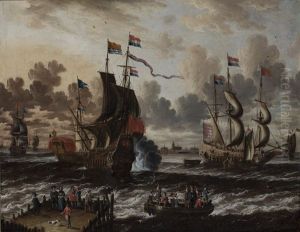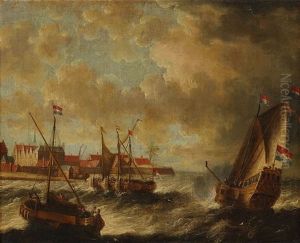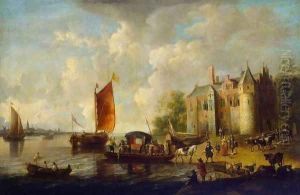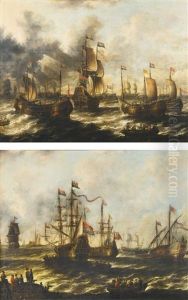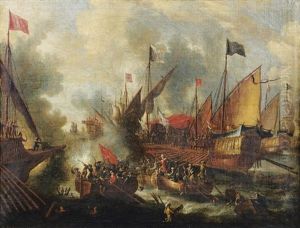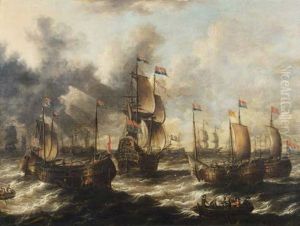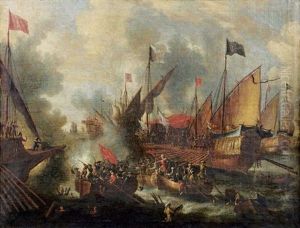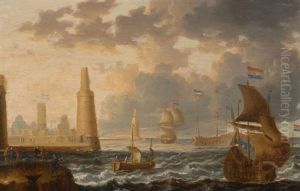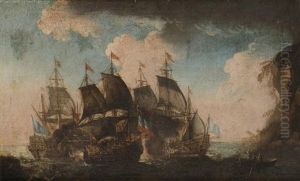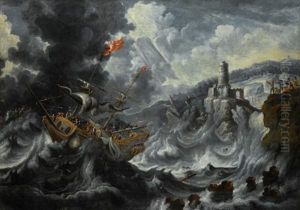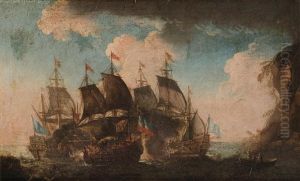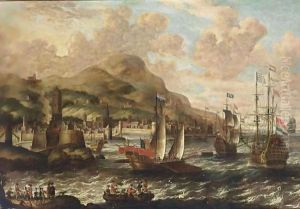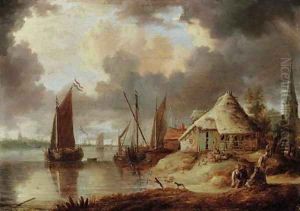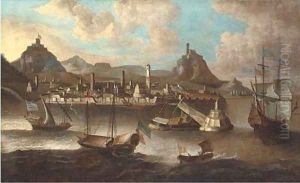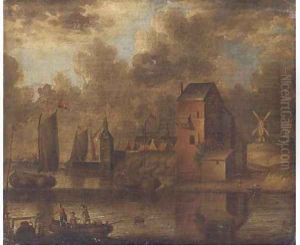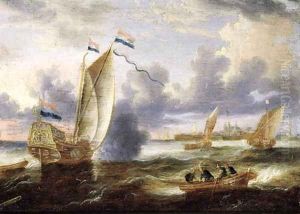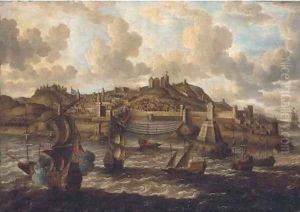Peter van den Velde Paintings
Peter van den Velde was a Flemish painter born in Antwerp in 1634, known for his maritime subjects, particularly of ships and storms at sea. He hailed from a family with a strong artistic tradition; his father, Jan van den Velde, was also a painter. Peter van den Velde is often associated with the Baroque period, a time characterized by exuberance, grandeur, and detail in European art.
Van den Velde's work was largely influenced by the marine painters of the Dutch Golden Age, such as Willem van de Velde the Elder and his son, Willem van de Velde the Younger. While there is no evidence that Peter van den Velde directly studied under the Dutch Van de Veldes, their stylistic influence is evident in his work. His paintings typically feature dramatic seascapes with ships battling the elements, highlighting the power and unpredictability of the sea.
Peter van den Velde's career unfolded during a time when maritime trade and naval power were of critical importance in Europe, especially for seafaring nations like the Netherlands and his homeland of Flanders. This historical context likely influenced the demand for and appreciation of his seascapes. Van den Velde's works were appreciated for their dynamic compositions and his ability to capture the interplay of light and water.
Despite his skill and the quality of his work, Peter van den Velde did not achieve the same level of fame as some of his contemporaries in the Dutch Republic. Nevertheless, his paintings were collected and admired by art connoisseurs during his lifetime and have continued to be appreciated by art historians and collectors to this day. Van den Velde died in 1723 in Antwerp, leaving behind a body of work that continues to be studied and admired for its contribution to the maritime art genre.
